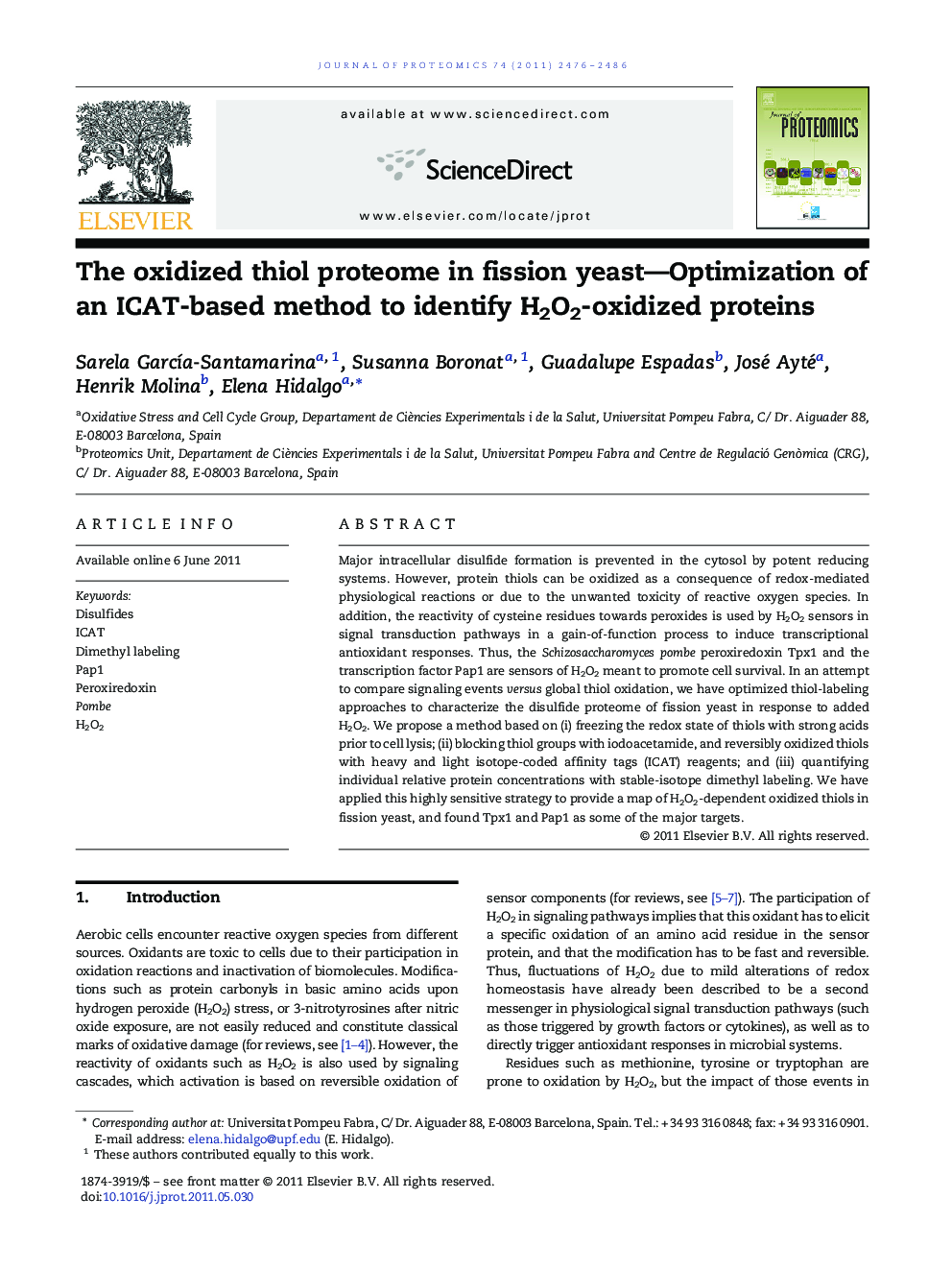| کد مقاله | کد نشریه | سال انتشار | مقاله انگلیسی | نسخه تمام متن |
|---|---|---|---|---|
| 1225415 | 968215 | 2011 | 11 صفحه PDF | دانلود رایگان |

Major intracellular disulfide formation is prevented in the cytosol by potent reducing systems. However, protein thiols can be oxidized as a consequence of redox-mediated physiological reactions or due to the unwanted toxicity of reactive oxygen species. In addition, the reactivity of cysteine residues towards peroxides is used by H2O2 sensors in signal transduction pathways in a gain-of-function process to induce transcriptional antioxidant responses. Thus, the Schizosaccharomyces pombe peroxiredoxin Tpx1 and the transcription factor Pap1 are sensors of H2O2 meant to promote cell survival. In an attempt to compare signaling events versus global thiol oxidation, we have optimized thiol-labeling approaches to characterize the disulfide proteome of fission yeast in response to added H2O2. We propose a method based on (i) freezing the redox state of thiols with strong acids prior to cell lysis; (ii) blocking thiol groups with iodoacetamide, and reversibly oxidized thiols with heavy and light isotope-coded affinity tags (ICAT) reagents; and (iii) quantifying individual relative protein concentrations with stable-isotope dimethyl labeling. We have applied this highly sensitive strategy to provide a map of H2O2-dependent oxidized thiols in fission yeast, and found Tpx1 and Pap1 as some of the major targets.
A thiol-labeling approach has been optimized to characterize the disulfide proteome of fission yeast upon H2O2. This method is based on (i) freezing the redox state of thiols with acid before cell lysis; (ii) blocking thiol groups with iodoacetamide, and disulfides with heavy and light isotope-coded affinity tags (ICAT reagents); and (iii) quantifying individual relative protein concentrations with stable-isotope dimethyl labeling.Figure optionsDownload high-quality image (82 K)Download as PowerPoint slideResearch highlights
► A thiol-labeling approach with ICAT reagents has been optimized.
► Disulfide proteome of fission yeast upon H2O2 has been characterized.
► Our gel-free approach is sensitive enough as to detect the transcription factor Pap1.
► Thiol oxidation of H2O2 sensors is concomitant to oxidation of H2O2 protein targets.
Journal: Journal of Proteomics - Volume 74, Issue 11, 19 October 2011, Pages 2476–2486